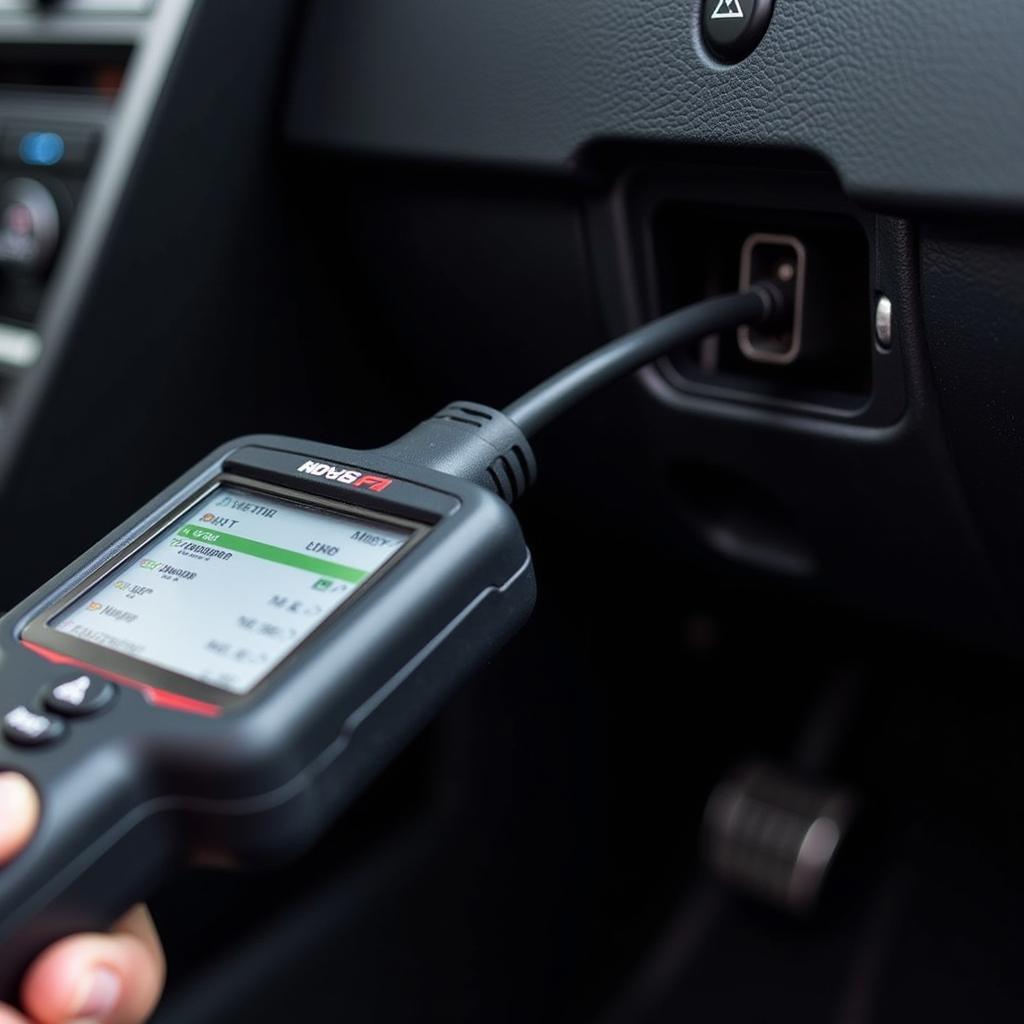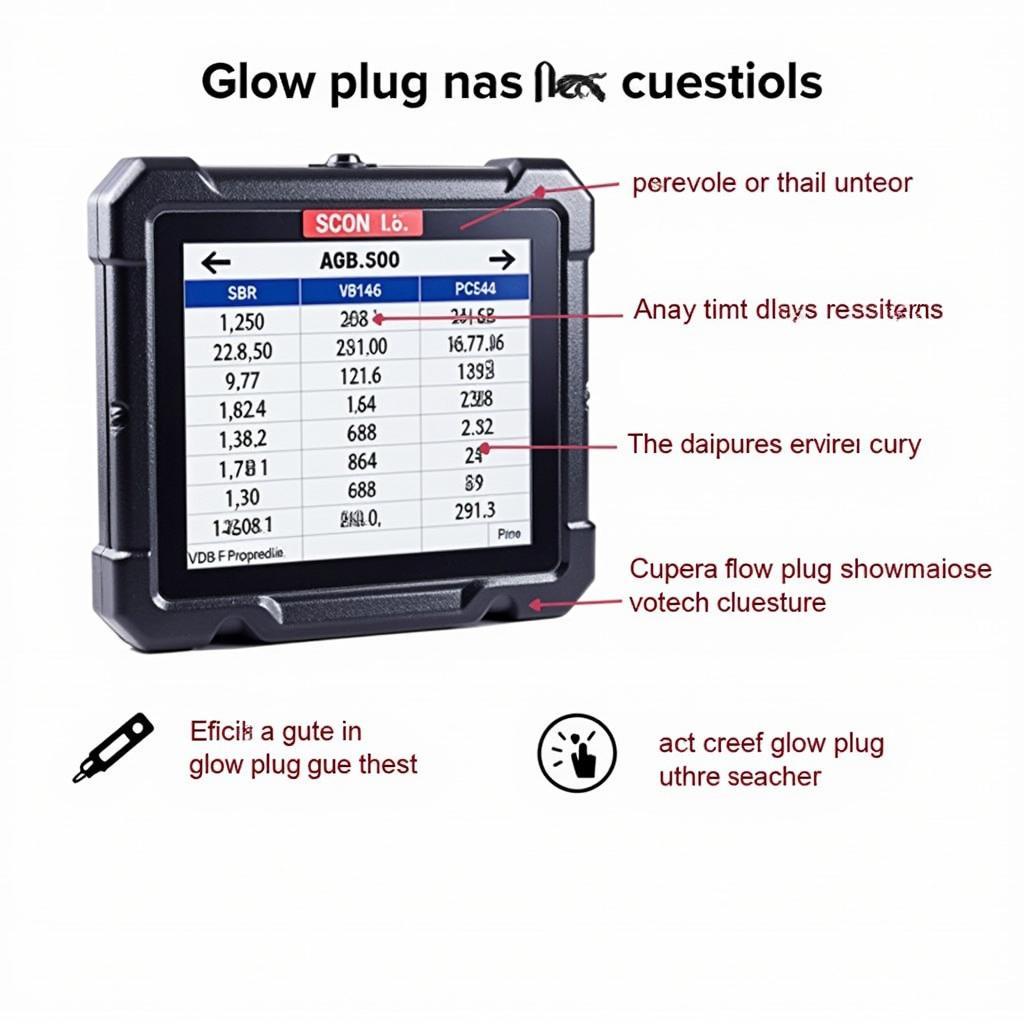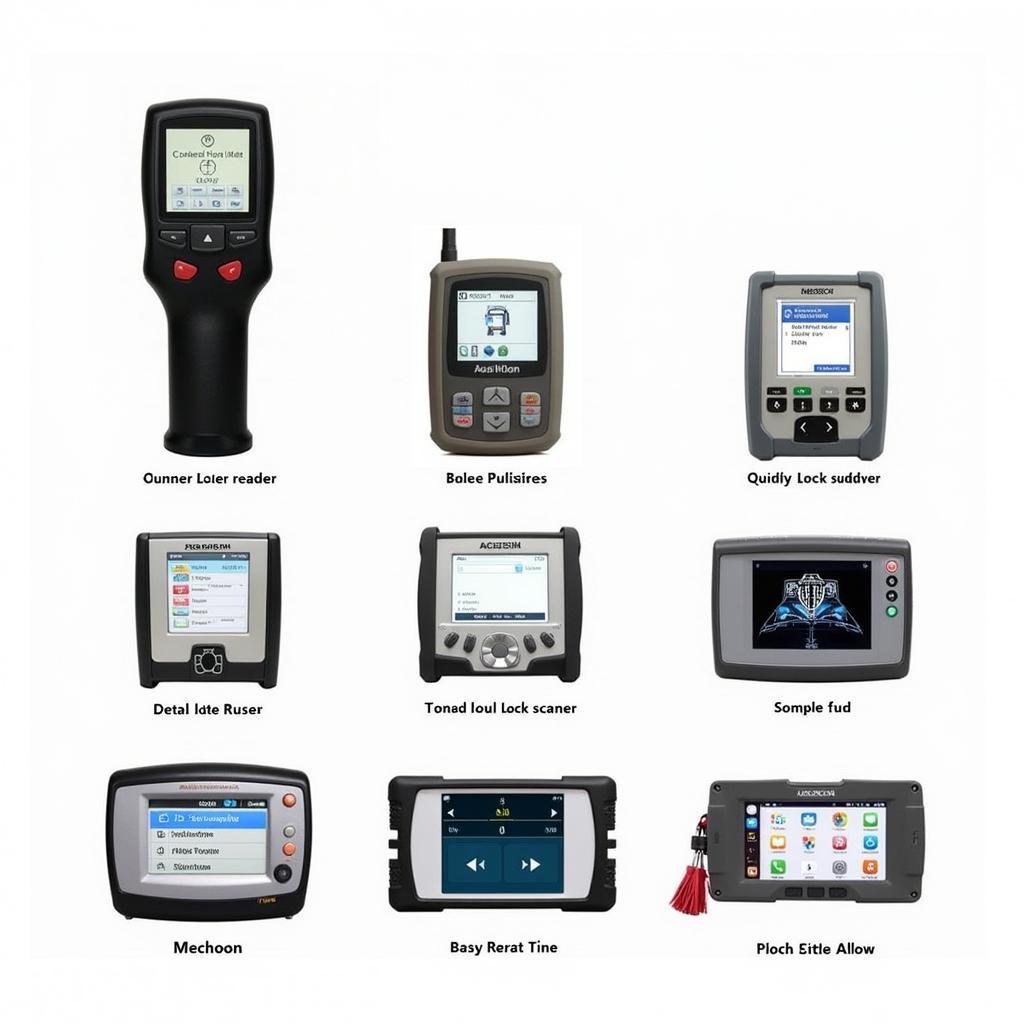Knowing how to look up speedometer identification using a scan tool is an essential skill for any car owner or mechanic. Whether you’re troubleshooting mileage discrepancies, diagnosing electrical issues, or replacing a faulty instrument cluster, a scan tool can be your best friend. This comprehensive guide will walk you through the process step-by-step, providing valuable insights and expert tips along the way.
Understanding Speedometer Identification and Scan Tools
Before we dive into the how-to, let’s clarify what speedometer identification is and why scan tools are crucial in this process.
What is Speedometer Identification?
Every vehicle comes with a unique speedometer calibrated to its specific make, model, and year. This calibration ensures accurate speed and mileage readings based on the vehicle’s tire size, axle ratio, and transmission gear ratios. Speedometer identification refers to accessing and understanding this specific calibration data.
The Role of Scan Tools
Scan tools are electronic devices that communicate with a vehicle’s onboard computer system, often referred to as the Engine Control Unit (ECU). They allow you to read and interpret diagnostic trouble codes, monitor live data streams from various sensors, and, most importantly for us, access information related to the speedometer.
Steps to Look Up Speedometer Identification Using a Scan Tool
Follow these steps to effectively retrieve speedometer information using a scan tool:
-
Choose the Right Scan Tool: Not all scan tools are created equal. Some are designed for basic code reading, while others offer advanced functionalities, including access to speedometer data. For our purpose, you’ll need a scan tool that explicitly states its ability to read vehicle identification information and module-specific data.
-
Connect the Scan Tool: Locate your vehicle’s OBD-II port, typically found under the dashboard on the driver’s side. Connect your scan tool to the port.
-
Turn on the Ignition: Turn the ignition key to the “on” position but do not start the engine. This powers up the ECU and allows the scan tool to establish communication.
-
Access Vehicle Information: Navigate through the scan tool’s menu to find the option for “Vehicle Information,” “System Scan,” or a similar term. This section usually provides an overview of the vehicle’s make, model, year, and VIN.
-
Select the Instrument Cluster Module: From the available modules listed, choose the one related to the instrument cluster, often labeled as “IC,” “IPC,” or similar.
-
Look for Speedometer Data: Once inside the instrument cluster module, browse through the available parameters or data points. Look for terms like:
- Vehicle Speed Sensor (VSS)
- Speedometer Calibration
- Odometer Reading
- Distance Traveled
-
Record the Information: The data displayed next to these parameters will provide you with the speedometer’s identification information, calibration values, and current mileage readings.
 Car Diagnostic Scan Tool Connected to OBD-II Port
Car Diagnostic Scan Tool Connected to OBD-II Port
Choosing the Right Scan Tool: Factors to Consider
Selecting the right scan tool for speedometer identification can be tricky. Here’s what to consider:
- Functionality: Ensure the scan tool explicitly mentions compatibility with your vehicle’s make and model and its capability to access speedometer-related data.
- User Interface: Opt for a scan tool with an intuitive and user-friendly interface for ease of navigation.
- Data Logging: A scan tool with data logging capabilities allows you to record live data streams, which can be helpful for diagnosing intermittent speedometer issues.
- Updates: Choose a scan tool from a reputable brand that provides regular software updates to ensure compatibility with newer vehicle models and access to the latest features.
Common Issues and Troubleshooting Tips
While using a scan tool for speedometer identification is generally straightforward, you might encounter a few hiccups along the way:
- Connection Issues: Ensure the scan tool is properly connected to the OBD-II port and the ignition is turned on.
- Compatibility Problems: If the scan tool is incompatible with your vehicle, it may not communicate effectively or display the desired data. Always double-check compatibility before purchasing a tool.
- Inaccurate Data: Inaccurate speedometer data might indicate a faulty speed sensor or issues with the instrument cluster itself.
 Mechanic Diagnosing Car Issues with a Scan Tool
Mechanic Diagnosing Car Issues with a Scan Tool
“Always start with the basics,” advises John Miller, a seasoned automotive electrician with over 20 years of experience. “Before assuming a faulty speedometer, check your speed sensor and wiring for any visible damage or loose connections. These simple checks can save you time and unnecessary expenses.”
Beyond Speedometer Identification: Other Uses of Scan Tools
Scan tools offer a multitude of functionalities beyond just looking up speedometer information. Here are a few examples:
-
Reading and Clearing Diagnostic Trouble Codes (DTCs): When the check engine light illuminates, a scan tool can retrieve and interpret the stored DTCs, providing insights into potential engine, transmission, or emission system issues.
-
Monitoring Live Data Streams: Scan tools display live data from various sensors, such as engine RPM, coolant temperature, oxygen sensor readings, and more, allowing you to monitor engine performance in real-time.
-
Performing Special Functions: Some advanced scan tools allow for performing special functions, such as resetting the oil life monitor, activating ABS modules for brake bleeding, or programming new keys.
Conclusion
Understanding how to look up speedometer identification using a scan tool empowers you to take charge of your vehicle’s maintenance and diagnostics. Whether you’re a DIY enthusiast or a professional mechanic, a reliable scan tool is an invaluable investment.
Need further assistance with speedometer identification or other automotive diagnostic needs? Don’t hesitate to contact the experts at ScanToolUS. Our team of skilled technicians is here to help you diagnose and resolve any vehicle issues.
Contact us today at +1 (641) 206-8880 or visit our office at 1615 S Laramie Ave, Cicero, IL 60804, USA.
FAQs
1. Can I use any OBD-II scan tool for speedometer identification?
Not all OBD-II scan tools offer this functionality. Look for tools that explicitly state their compatibility with your vehicle model and their ability to access speedometer-related data.
2. What if my scan tool doesn’t show speedometer data?
This could indicate a compatibility issue, a faulty instrument cluster, or a problem with the vehicle’s communication network.
3. Can a scan tool adjust speedometer calibration?
Some advanced scan tools offer calibration capabilities, but it’s best to consult a qualified mechanic for such adjustments.
4. What is the difference between a speedometer and an odometer?
A speedometer displays the vehicle’s current speed, while the odometer records the total distance traveled.
5. Why is my speedometer reading inaccurate?
Possible causes include a faulty speed sensor, incorrect tire size, issues with the instrument cluster, or a wiring problem.


